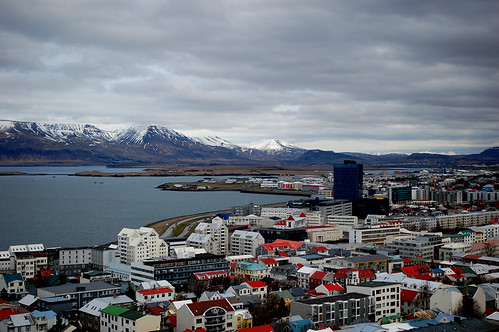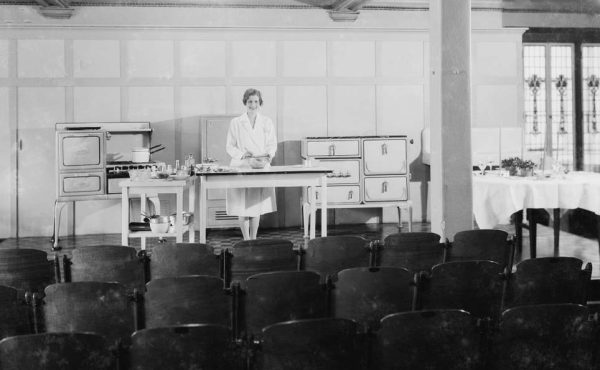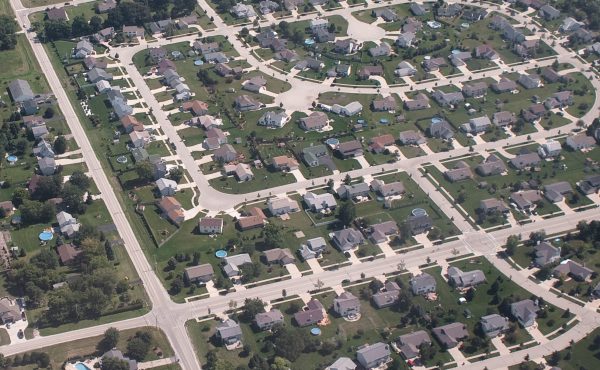
Spacing publisher Matthew Blackett is travelling through Iceland, Denmark, Sweden and Germany and will occasionally post his observations about all things urban landscape(ish).
– – – – – – –
REYKJAVIK, ICELAND — The first stop on my three-week Scandinavian jaunt took me through far-off Reykjavik, Iceland. The trip was fortuitous — for me, at least — since Iceland’s economy tanked in November 2008 when the financial crisis reached its zenith. The country is well-known for being insanely expensive to foreigners as most every product, outside of energy production and fish, has to be imported. The joke is only the rich can afford to be vegetarians in this country. But with the economy in dire straights, the exchange rate is very favourable and tourist dollars are in high demand. Essentially, the exchange rate between the Icelandic kroner and Canadian dollar are about equal (5kr 100k=$1). Icelandair had a spring seat sale that offered free stop-overs in Reykjavik, so I jumped at the opportunity.
Iceland’s economy was strictly controlled by the government until the late 1980s when it opened up to private investment. I find this state-oversight slightly ironic as Iceland is considered to have one of the first functioning parliaments dating back over 1,000 years. Iceland was booming until recently, when it was revealed the national banks were moving around cash that they didn’t have (something like 10 times the country’s GDP). The World Bank and Norway came to Iceland’s rescue but it left the country’s residents more grumpy than normal during the dark winter months.

photo by Daniel Scarnecchia
A prolonged popular protest in January forced the conservative government to resign, a breif caretaker government was sworn in, and an election was eventually triggered. The protests, though attended in large numbers by the younger generation, were also spearheaded by rural fishermen and the middle-age working class. The conservative coalition, which had easily dominated the political landscape for nearly 20 years, was defeated by the centre-left coalition of social democrats, environmentalists and a new party called the Citizen’s Movement, created only nine weeks before the election.

This marked another lucky break for me: as an elections junkie, I was in Iceland for their historic vote. One of the best aspects of Reykjavik is the ubiquitousness of wifi, which allowed me to follow the results as they rolled in and I wandered from drinking hole to drinking hole. In one of the bars, I provided updates to the DJ who announced the results with regularity. The conservatives only garnered 30% of the vote, with the centre-left coalition taking 55% and the support of the Citizens’ Movement who drew almost 8% of the vote. Iceland also elected their own kind of Barack Obama politician: the new prime minister, Johanna Sigurdardottir, is the world’s first openly gay leader.
Now, the economy and a national election may seem to have little to do with the urban landscape or public spaces. But I can certainly connect them. Let me try.

One of the first things I noticed upon arrival was a total lack of billboard infrastructure; nothing atop buildings or by the sides of roads and highways. The only form of public advertising appeared on bus shelters, “info” pillars, and public washrooms. And almost all ads were from the political parties.

Back home in Toronto and all over Canada, we’re used to seeing political party lawn signs on front yards or in windows of shops and apartments. None of that existed in Reykjavik or the rest of Iceland. Maybe the cost of printing signs was seen as frivolous in dire economic times; maybe there’s a bylaw against such signs; or the culture of displaying your political stripes on your private property just doesn’t exist here. The only overt support of a political party came in the form of 1-inch buttons. Almost all of the stylish people and urban hipsters (and Reykjavik is crawling with the stylish) sported a button of one party or the other.
Rekyjavik has the reputation of being a late night party town. Most people don’t hit the bars or clubs until 1am. Election day arrived on a Saturday and results didn’t begin roll in until midnight that night. After reading about the mass demonstrations in January, and knowing that Reykjavik is the home to the country’s more liberal population, I suspected the city streets would be filled with celebrations. But this Saturday night was calm beyond recognition. It seems the people stayed home breathing a collective sigh of relief that their own form of political change was finally arriving.
All photos by Matthew Blackett, except where noted




6 comments
The first photograph is breath-taking.
Political billboards in traditional public spaces like sidewalks seem unlikely in the U.S. given separation of church and state doctrine…
@Georgia: In what sense are sidewalks “church”? I’m as big a fan of public space as anyone, but even I wouldn’t go that far…
The exchange rate in this article is very wrong. I was just in Iceland, and it’s a wonderful and affordable country to visit, but 5kr = 5 cents. To convert Icelandic krona to Canadian, it’s pretty much exactly dividing by 100.
Yes Michelle, you’re right. I got my countries mixed up as Denmark is 5k to $1.
But it still was about the same prices as Canada
@Greg, thanks for pointing out my erroneous statement.
I meant: political messages in traditional public spaces in the U.S. (ex: sidewalks) seems rare in contrast to the common occurrences of soapbox speeches/ protests in the late 19/ early 20 centuries (ex: Wobblies). Even on the campus of the public university in Berkeley, CA, political campaigning is limited to designated areas.
These pics are tops. This reminds me of an excursion I took into yugoslavia. The landscape speaks to us often, of events and times. You have captured this beautifully. Well done and keep up the top grade work!